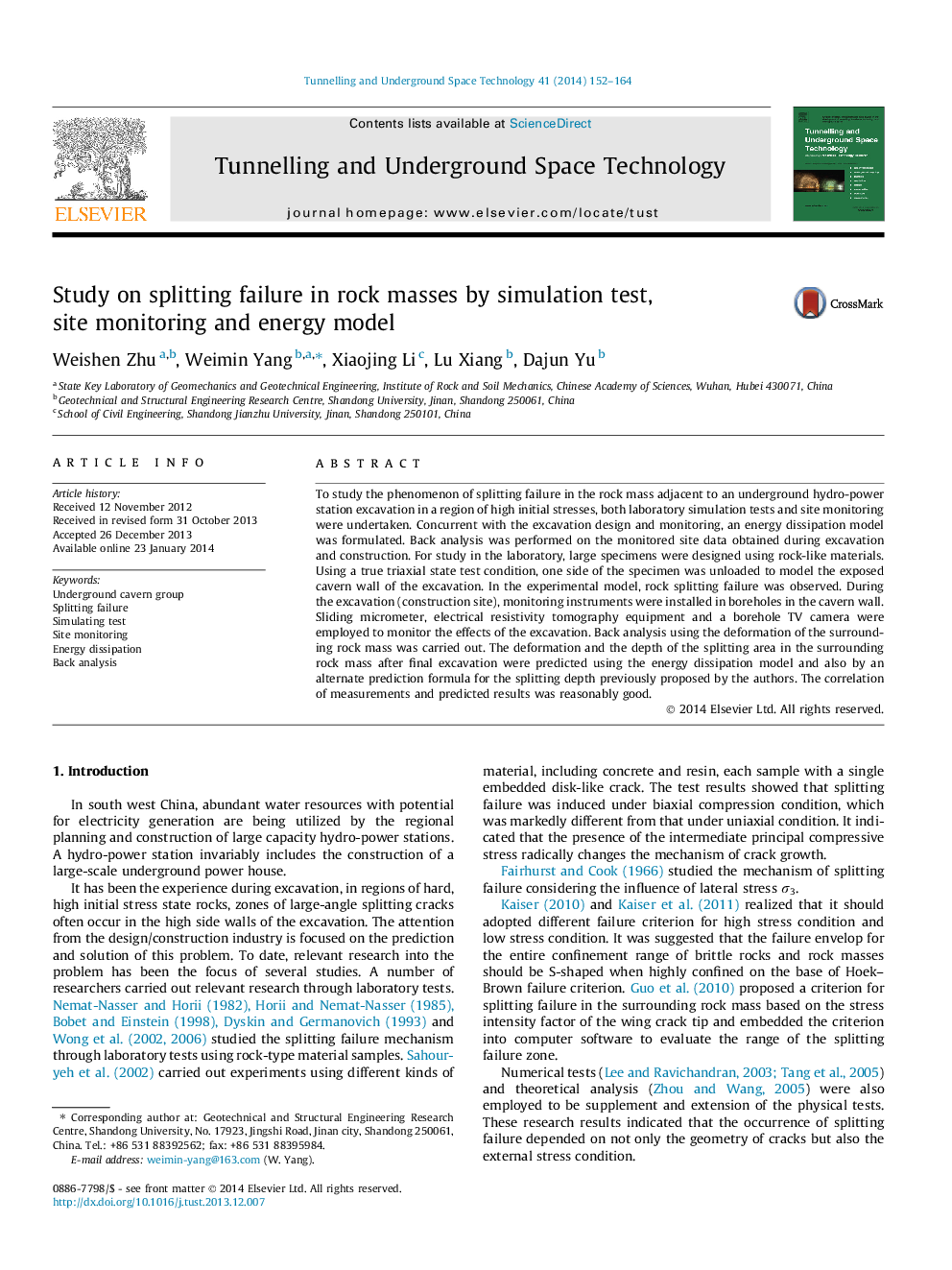| کد مقاله | کد نشریه | سال انتشار | مقاله انگلیسی | نسخه تمام متن |
|---|---|---|---|---|
| 312385 | 534211 | 2014 | 13 صفحه PDF | دانلود رایگان |
• True triaxial tests with large specimens were conducted to reproduce splitting failure in laboratory.
• A constitutive equation was established with different deformation modulii for loading and unloading.
• Splitting failure phenomenon was proved to exist in site with two kinds of instruments.
To study the phenomenon of splitting failure in the rock mass adjacent to an underground hydro-power station excavation in a region of high initial stresses, both laboratory simulation tests and site monitoring were undertaken. Concurrent with the excavation design and monitoring, an energy dissipation model was formulated. Back analysis was performed on the monitored site data obtained during excavation and construction. For study in the laboratory, large specimens were designed using rock-like materials. Using a true triaxial state test condition, one side of the specimen was unloaded to model the exposed cavern wall of the excavation. In the experimental model, rock splitting failure was observed. During the excavation (construction site), monitoring instruments were installed in boreholes in the cavern wall. Sliding micrometer, electrical resistivity tomography equipment and a borehole TV camera were employed to monitor the effects of the excavation. Back analysis using the deformation of the surrounding rock mass was carried out. The deformation and the depth of the splitting area in the surrounding rock mass after final excavation were predicted using the energy dissipation model and also by an alternate prediction formula for the splitting depth previously proposed by the authors. The correlation of measurements and predicted results was reasonably good.
Journal: Tunnelling and Underground Space Technology - Volume 41, March 2014, Pages 152–164
